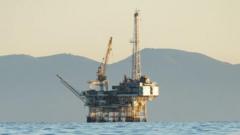The ban includes the entire Atlantic coast and eastern Gulf of Mexico, as well as the Pacific coast of California, Oregon, and Washington, along with a section of the Bering Sea off Alaska. President Biden emphasized the need to protect these areas, cautioning that drilling poses risks that could lead to irreversible damage. He noted that this decision aligns with the values of coastal communities, businesses, and beachgoers who recognize the potential harm such drilling could inflict on cherished landscapes and ecosystems.
Biden stated, "My decision reflects what coastal communities, businesses, and beachgoers have known for a long time: that drilling off these coasts could cause irreversible damage to places we hold dear and is unnecessary to meet our nation's energy needs. It is not worth the risks." As the Biden administration works to leave a lasting environmental legacy, this ban marks a crucial step in combatting climate change and preserving natural resources.
This developing story aims to provide further insights and implications of the ban as it unfolds, indicating a significant shift in U.S. energy policy and environmental stewardship.
Biden stated, "My decision reflects what coastal communities, businesses, and beachgoers have known for a long time: that drilling off these coasts could cause irreversible damage to places we hold dear and is unnecessary to meet our nation's energy needs. It is not worth the risks." As the Biden administration works to leave a lasting environmental legacy, this ban marks a crucial step in combatting climate change and preserving natural resources.
This developing story aims to provide further insights and implications of the ban as it unfolds, indicating a significant shift in U.S. energy policy and environmental stewardship.




















